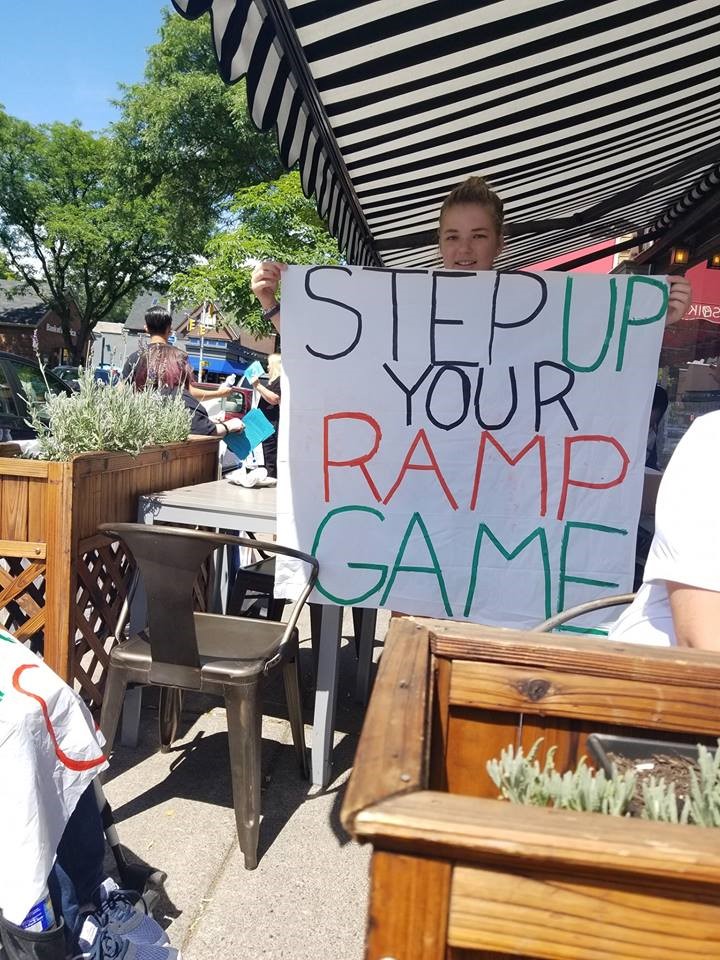- A
- A
- A

By Frieda Jones – Advocacy Intern
The Disability Integration Act is cost-effective, useful, and positively impacts marginalized communities—and somehow, it’s still making progress in Congress. Being 19 and as jaded as I was about the government and its usefulness, this was quite a surprise: a pleasant surprise, but a surprise nonetheless.
The DIA makes it a priority for disabled and elderly people to live in the community with the assistance they need, rather than be trapped in institutions. Ask anyone you know, any age: would you rather live at home or in a nursing home? I’ll give you a hint: institutions are not the way to go. Based on current funding and structures, though, people who don’t need to be institutionalized often are anyways. Of course, there’s nuance to this, but bottom line is that the laws need to change.
Because I’m a college student and able to live independently, this is an issue that hasn’t touched me much at all. (Of course it’s a possibility for my future, but that’s way down the line.) So why do I feel strongly about its passage? Part of it is the Act itself. It’s absolutely a human rights issue; people who should be in the community are locked away in prison-like institutions. Working at the Center for Disability Rights, I’ve learned more about the horrors that are daily realities in nursing homes: everything from disabled teenagers forced to go to bed by 8, to people left in their room for days as a punishment, to other physical, emotional, and mental abuse. (If you want to know more, check out CDR’s film fest on August 23rd.)
Part of its importance is bigger than the act itself, though. The bill is bipartisan, which I thought just didn’t exist anymore. The country is so divided by party lines, that I’ve always unconsciously assumed that cooperation is impossible and nothing will ever get done. (Yes, there’s a lot of bias here. I came of voting age in 2017.) As I inputted meetings into the website between representatives and activists, though, I started to see where the system actually seems to work. Some of the Senators and Congress members wanted to know more about the financial aspects, some told the activists about their own encounters with unnecessary institutionalization, some asked about the other sponsors, and some asked their staff members why they hadn’t already signed on.
I’ve always been on the frays of political activism. I follow the news cycle as closely as is reasonable for my mental health, I’ve signed a few petitions, been to several marches, registered to vote, and use ResistBot every now and then to text my representatives. It’s hard though. There are so many issues that I feel strongly, but helpless, about. I’m brand new to the Disability Community, and working at CDR meant I was thrown in head first. (Example A: I can’t go anywhere without scoping out accessibility while I’m there.) Within my first two weeks I was participating in a protest of a business that had a one-step entrance, and after a couple of hours, the owner signed a paper saying that their building would have a ramp within the next 60 days. Whether or not that actually happens, the protest gave me an incredible sense of accomplishment. With just two hours of our lives, we made a restaurant comply with the ADA. Grassroots activism makes you feel powerful, and I would absolutely recommend it. Other activism is powerful too, though. A single day of lobbying at Congress got at least 8 more cosponsors for the DIA. I never realized that’s all it takes.

(Image of Frieda holding a protest sign that reads “Step up your ramp game”)
The DIA is a win in every imaginable way: cheaper for the government, invaluable for disabled people, politically savvy, well supported, better for communities… the list continues. As I did research, I kept waiting for the catch: something to fight on, a trade-off, another reason to be disappointed. As far as I can tell, there isn’t one. In this one case, people who care about an issue are informing their representatives about it, who are then working to make life better for the people whom they represent. It’s the government that we all learned about in elementary school before we discovered pocket lining and high-paid lobbyists and institutional bias. The DIA is like the bill from the School House Rock song. It’s wholesome and useful and seen for what it is, not what sponsors can get out of it down the line.
Whether or not advocating for the DIA is your calling (although it should be), activism is accessible.